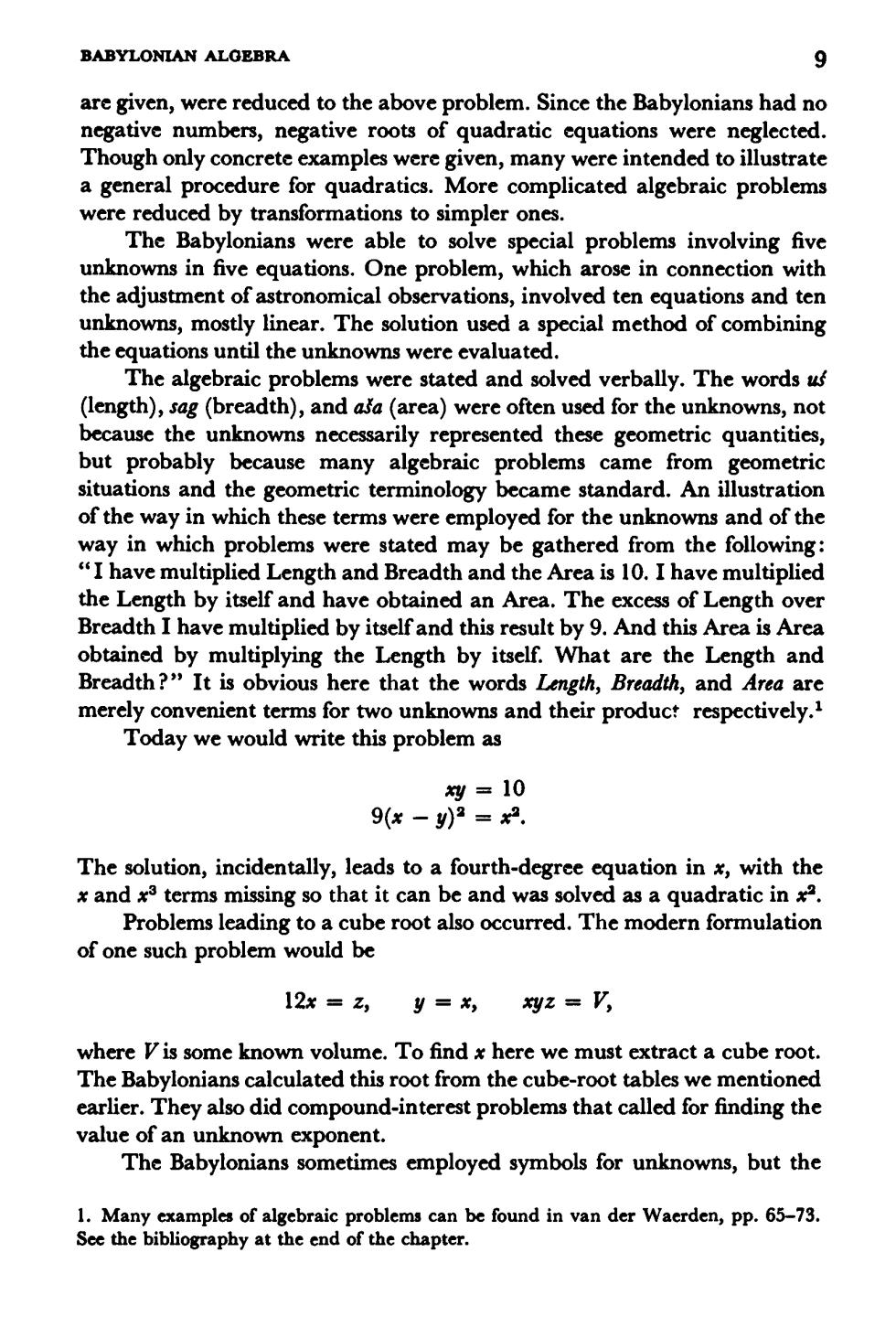正在加载图片...

BABYLONIAN ALOEBRA are given,were reduced to the above problem.Since the Babylonians had no egative numbers,negative roots of quadratic quations were neglected. Though only concrete examples were given,many were intended to illustrate a general procedure for quadratics.More complicated algebraic problems were reduced by transformations to simpler ones. The Babylonians were able to solve special problems involving five unknowns in five equations.One problem,which arose in connection with the adjustment of astronomical observations,involved ten equations and ten unknowns,mostly linear.The solution used a special method of combining the equations until the unknowns were evaluated. The algebraic problems were stated and solved verbally.The words uf (length),sag (breadth),and afa(area)were often used for the unknowns,not because the unknowns necessarily represented these geometric quantities, but probably because many algebraic problems came from geometric situations and the geometric terminology became standard.An illustration of the way in which these terms were employed for the unknowns and of the way in which problems were stated may be gathered from the following: "Ihave multiplied Length and Breadth and the Area is 10.Ihave multiplied the Length by itself and have obtained an Area.The excess of Length over Breadth I have multiplied by itselfand this result by 9.And this Area is Area obtained by multiplying the Length by itself.What are the Length and Breadth?"It is obvious here that the words Length,Breadth,and Area are merely convenient terms for two unknowns and their product respectively. Today we would write this problem as =10 9(x-)2=x2. The solution,incidentally,leads to a fourth-degree equation in with the and x3 terms missing so that it can be and was solved as a quadratic in * Problems leading to a cube root also occurred.The modern formulation of one such problem would be 12x=z, y=, z=V, where Vis some known volume.To find here we must extract a cube root. The Babylonians calculated this root from the cube-root tables we mentioned earlier.They also did compound-interest problems that called for finding the value of an unknown exponent. The Babylonians sometimes employed symbols for unknowns,but the 1.Many examples of algebraic problems can be found in van der Waerden,pp.65-73. See the bibliography at the end of the chapter